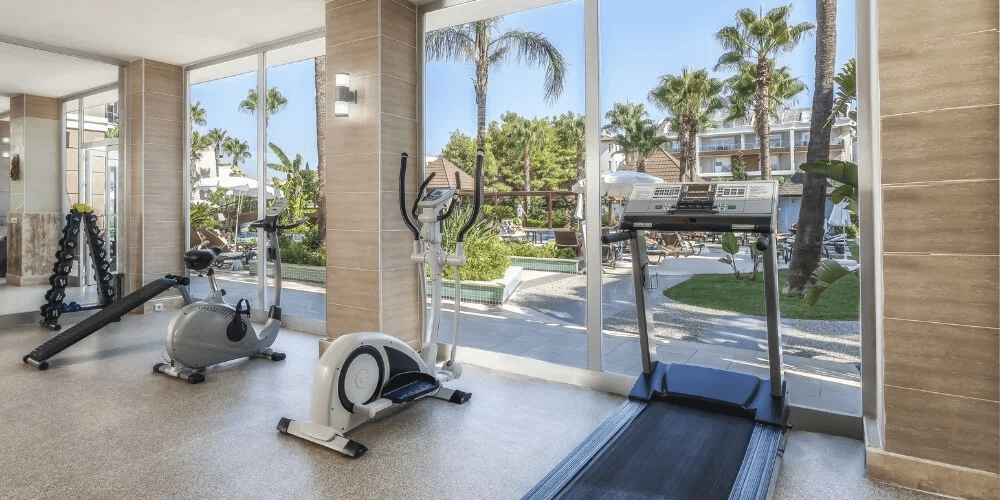When we think of hotel development, many of us likely think of shiny high-rise establishments standing tall in CBDs and city precincts. However, suburban hotel development is quickly growing in popularity all over Australia with a rise in suburban demand, creating more exciting opportunities in the hospitality space.
In this article, we will discuss some of the key factors and considerations that are involved in suburban hotel development, including benefits and risks. We’ll use Victoria as an example, which has seen a significant increase in suburban hotel development in recent years and can act as a good use case for future endeavours to be guided by.
Suburban Hotel Development: Opportunities and Advantages
Suburban hotel development holds several compelling advantages, including cost efficiency driven by lower land and construction expenses. These areas provide a more budget-friendly option without sacrificing quality, ultimately leading to better returns on investment.
Additionally, suburban markets typically offer reduced competition compared to urban counterparts, resulting in higher occupancy rates and more stable revenue streams for new developments.
Another significant benefit lies in the access to untapped or emerging markets. Suburban growth attracts diverse demographics, including business travellers, families, and tourists seeking a quieter atmosphere.
These evolving markets allow hotels to cater to unique preferences, fostering guest loyalty and positive word-of-mouth marketing. In essence, suburban hotel development presents a promising avenue for cost-effective ventures and the opportunity to thrive in less competitive, emerging markets.
Recently, Victoria has been at the forefront of suburban hotel development with successful projects such as Sage Ringwood, M-City, Mercure Doncaster, and the recently announced Standard Hotel in Fitzroy. These projects reflect the state government’s policy to create activity centre zones in suburban locations, to alleviate the pressure on traffic flow in and out of the CBD. They also reflect the emergence of commercial office precincts, retail centres, education institutions, health facilities, and entertainment venues in suburban locations.
Challenges and Risks in Suburban Hotel Development
However, suburban hotel development also comes with its own challenges and risks. Not every suburban location is suitable or feasible for hotel development. Developers and investors need to carefully analyse and evaluate the potential of each location, based on the underlying fundamentals of demand and supply.
They also need to tailor their product and service offering to the specific needs and preferences of their target customers. They need to create a unique and distinctive value proposition that differentiates their hotel from other alternatives.
Understanding Demand Drivers
The first step in suburban hotel development is to understand the demand drivers for paid hotel accommodation in a particular location. Demand drivers are the factors that influence the volume and nature of demand for hotel rooms, such as business travel, leisure travel, events, or other purposes. Demand drivers can vary depending on the location, season, day of week, or time of day.
Some of the most common demand drivers for suburban hotel accommodation include present or planned developments, such as:
- Infrastructure Investment: Suburban areas experiencing significant infrastructure development can create a need for hotel accommodations, catering to contractors, consultants, workers, or project-related visitors. Infrastructure projects encompass road construction, railway expansion, airport upgrades, port developments, utility enhancements, and public facility construction.
- Commercial Offices: Office complexes and precincts play a pivotal role in driving demand for hotel accommodations, primarily among corporate travellers conducting business or attending meetings within these areas. Examples of such office settings encompass business parks, industrial zones, and innovation hubs.
- Education: Educational institutions serve as a source of demand for hotel accommodations, serving students, faculty, and visitors associated with these establishments. These institutions may include universities, schools, colleges, and training centres.
- Healthcare: The presence of healthcare facilities can generate a need for nearby hotel accommodations, accommodating patients, healthcare staff, and facility visitors. Healthcare settings include hospitals, clinics, medical centres, and aged care facilities.
- Retail: Retail hubs draw in shoppers, staff, and visitors, fostering the demand for hotel accommodations in close proximity to these bustling centres. Examples encompass shopping malls, outlets, and various markets.
- Entertainment & Sports: Entertainment venues and sporting attractions create a demand for hotel accommodations, attracting attendees, staff, and visitors to these venues. Notable examples include stadiums, arenas, theatres, cinemas, and casinos.
Market Research and Analysis for Suburban Hotel Development
To identify and quantify the demand drivers for a suburban hotel location, developers and investors need to conduct thorough market research and analysis. This typically involves collecting and analysing data on the current and projected supply and demand of hotel accommodations in the location and its surrounding areas.
Developers and investors also need to assess the competitive environment and the performance of existing or proposed hotels in the location and immediate surroundings. It’s important to identify the gaps and opportunities in the market and estimate the potential occupancy, ADR, RevPAR, GOP, and NOI of their hotel project.
This is a pivotal step in suburban hotel development and can often mean the difference between failure and success. Simply put, if the research shows that there’s not enough demand in a particular area, there’s little point in trying to generate interest there. This is often not obvious until after thorough market research and analysis have been conducted, so we highly recommend taking time and a little extra effort with this step.
 Determining the Product and Service Offering
Determining the Product and Service Offering
The second step in suburban hotel development is to determine the product and service offering that will best suit the demand drivers and target customers of a particular location. The product and service offering refers to the physical and intangible aspects of the hotel that create value for customers, such as the size, class, design, amenities, facilities, services, brand, or operator of the hotel.
Some of the common product and service offerings for suburban hotel accommodation are:
- Size: This focuses on the number of rooms or keys that the hotel has. The size of the hotel should match the demand drivers and target customers of the location. For example, a suburban location with strong corporate demand may require a larger hotel than a suburban location with mainly leisure demand.
- Class: This includes both the hotel product and service. The class of the hotel should also align with the expectations and preferences of the target customers. A suburban location with affluent customers may require a higher-class hotel than a suburban location with budget-conscious customers, for instance.
- Design: The hotel’s style and appearance, both exterior and interior, are part of its offerings. The design should reflect the identity and character of the location and its community; a suburban location with a historic or cultural heritage could be infused with a more traditional or culturally specific design than a suburban location with a modern or trendy vibe.
- Amenities: Think room types, bedding, furniture, appliances, bathroom, internet, TV, minibar, safe, etc. The amenities of the hotel must meet the needs and desires of the target customers. For example, a suburban location with family or leisure customers may require more spacious and comfortable rooms with kitchenettes and balconies than a suburban location with business or solo customers.
- Facilities: Covering common areas and services that the hotel provides for its guests, such as the lobby, reception, restaurant, bar, lounge, gym, pool, spa, business centre, meeting rooms, function rooms, and more. The hotel’s facilities should create demand and value for its customers – a suburban location with corporate or event customers may require more extensive and flexible meeting and function facilities than a suburban location with leisure or transient customers.
- Services: This includes interactions and experiences that the hotel staff provide for its guests, such as check-in, check-out, housekeeping, room service, concierge, and valet. These are the types of elements that not only need to meet demand, but also need to exceed customers’ expectations with a personalised touch that goes a little ‘above and beyond’.
- Brand: This refers to the name and reputation that the hotel has in the market. The brand of the hotel should convey a clear and consistent message and image to the target customers of the location. For example, a suburban location with brand-conscious or loyal customers may require a well-known and established brand than a suburban location with brand-agnostic or new customers.
- Operator: This is the company or organisation that manages and runs the hotel on behalf of the owner or developer. The operator of the hotel should have the expertise and resources to deliver a high-quality product and service to the target customers of the location. A suburban location with complex or specialised demand may require a professional and experienced operator than a suburban location with simple or generic demand.
Feasibility Studies and Market Testing
To determine and deliver the product and service offering for a suburban location, developers and investors need to conduct thorough feasibility studies and market testing. They need to evaluate and compare different options and scenarios for their hotel project. It’s also important to select and negotiate with suitable partners and stakeholders for the hotel project, such as architects, designers, contractors, suppliers, brands, operators, etc.
Above all, it’s essential to ensure that the product and service offerings are aligned with the market positioning and value proposition of the suburban hotel development.
Selecting Partners and Stakeholders
In suburban hotel development, selecting the right partners is pivotal for success. These collaborators significantly influence various project aspects, including financing, construction, operation, and marketing. Here are essential considerations for choosing partners wisely:
- Financial Backers: Choose investors or lenders experienced in hospitality and suburban markets, ensuring they align with your project’s goals.
- Development Experts: Partner with reputable real estate developers, architects, and construction firms with suburban experience.
- Hotel Management: Select a trusted hotel management company with a proven suburban track record and alignment with your vision.
- Local Authorities: Build strong relationships with local authorities to navigate regulations, secure incentives, and streamline approvals.
- Community Engagement: Engage with the local community, addressing concerns, gathering feedback, and fostering positive relationships.
- Marketing Allies: Collaborate with marketing agencies, OTAs, and tourism boards to create effective strategies for attracting guests.
- Sustainability Advisors: Work with sustainability experts to incorporate eco-friendly practices into your suburban hotel.
Is Suburban Hotel Development the Right Move?
Suburban hotel development can be an attractive and viable option for developers and investors who are looking for new opportunities in the hotel industry. Suburban hotel development can offer lower costs, higher returns, and less risk than CBD hotel development. However, suburban hotel development also requires careful planning, analysis, and execution.
To excel in suburban hotel development, it’s crucial for developers and investors to grasp the unique demand drivers and craft an exceptional hotel experience tailored to their target audience. This entails seizing opportunities and surmounting challenges inherent to suburban development.
With Axsia HTL, your suburban hotel project is in expert hands. We boast a rich track record of successfully delivering and advising on suburban hotels across Victoria and beyond. Count on us to identify and assess prospective suburban locations, enabling you to make informed decisions. Our expertise extends to designing and delivering a product and service offering optimised for market potential and profitability. Further, we excel at risk management and mitigation, safeguarding your suburban hotel project from uncertainties.
If you’re interested in suburban hotel development, please contact us today. We would love to hear from you and discuss how we can assist you with your hotel project. We look forward to working with you on your suburban hotel development journey.





